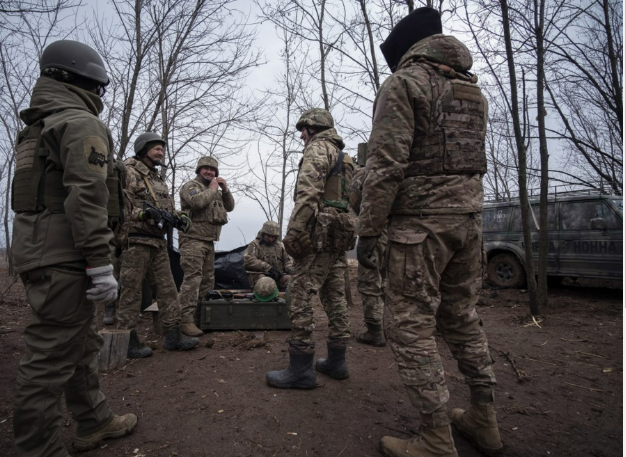Ukraine’s Mobilisation Campaign Picks up Despite Faltering Enthusiasm

Ukraine’s Mobilization Efforts: Balancing Recruitment and Public Sentiment Amid Ongoing Conflict
In the outskirts of Kyiv, a heightened sense of urgency surrounds Ukraine’s military draft. As the war against Russia drags on, reactions to draft notices vary significantly. Some men comply quietly, while others either flee or refuse to engage. Despite the ramped-up mobilization drive, enthusiasm for military service is waning.
Draft Resistance and Public Sentiment
Ukrainians’ responses to the draft are increasingly mixed. Many are seeking exemptions from military service rather than enlisting willingly. Draft officer “Fantomas,” who was recently on patrol in Kyiv, notes a predominant trend of people trying to avoid the draft. This reluctance comes in the wake of public dissatisfaction and reports of draft corruption, which have soured perceptions of the mobilization process.
In April, President Volodymyr Zelenskiy implemented changes to the draft system. The minimum draft age was lowered from 27 to 25, and a new rule requires men under 60 to regularly update their personal information with draft offices. These adjustments aim to streamline the mobilization process and address the shortage of troops.
Improving Recruitment Figures
Despite the challenges, recent efforts have led to a rise in conscription rates. According to the Ukrainian military, conscription figures more than doubled in May and June compared to earlier months, reflecting some success in the updated mobilization strategy. However, specific numbers remain classified.
Strategic Military Needs
On the front lines, Ukrainian forces face mounting pressure from Russian troops, particularly in the eastern regions. The prolonged conflict and unclear timelines for troop demobilization have left many soldiers exhausted and in need of rotation. Some estimates suggest that Ukraine could potentially enlist up to 200,000 additional troops by year’s end, which could also enable the demobilization of some existing forces. However, careful management is essential to prevent any weakening of the front lines.
Effective training and deployment of new recruits are critical. Analysts stress that while increasing troop numbers is important, ensuring that new soldiers are well-trained and effectively utilized is crucial for maintaining military strength and effectiveness.
Administrative and Public Challenges
Draft offices are struggling to manage the influx of individuals coming to register or update their details. Processing times have lengthened, and there are reports of increased public frustration. Many Ukrainians are critical of the draft system, with around 50% believing it is failing and 60% expressing negative views about draft offices. Issues like corruption and confrontations between recruiters and civilians have further fueled this dissatisfaction.
Recruiters on the Front Lines
Recruiters like Fantomas face difficult interactions as they attempt to enforce the draft. While some encounters are positive, others are fraught with tension. Fantomas has experienced firsthand the challenges of managing public interactions and the impact of negative publicity. Despite occasional conflicts, he and other recruiters are working to maintain morale and ensure the draft continues to meet Ukraine’s military needs.
Conclusion
Ukraine’s mobilization efforts are navigating a complex landscape of public sentiment, administrative challenges, and ongoing military demands. As the country strives to bolster its defenses, balancing recruitment, training, and effective deployment remains a critical task. The evolving situation underscores the need for continued adaptation and strategic management in the face of enduring conflict.
